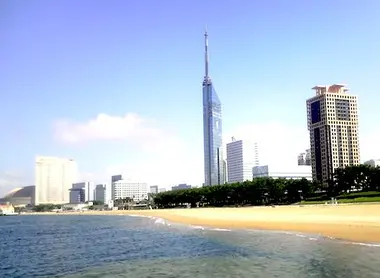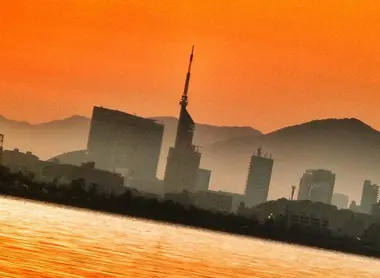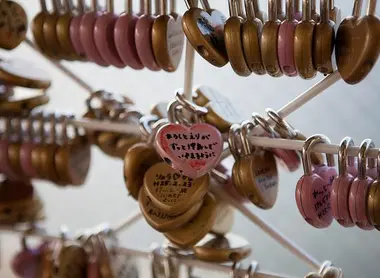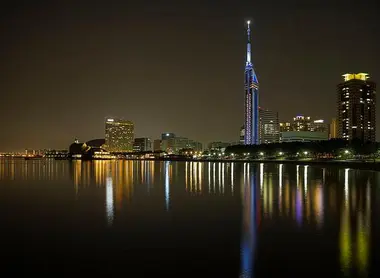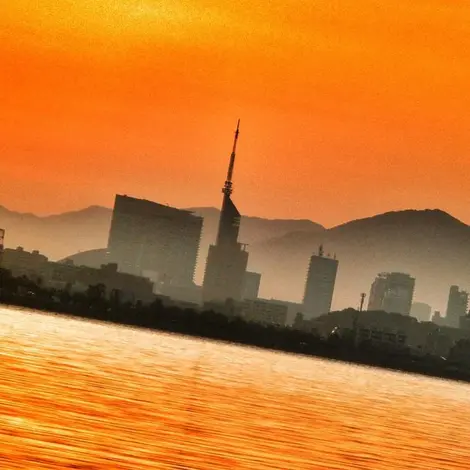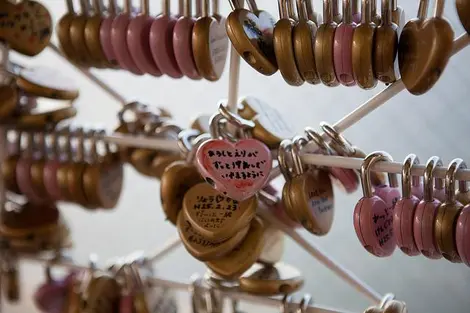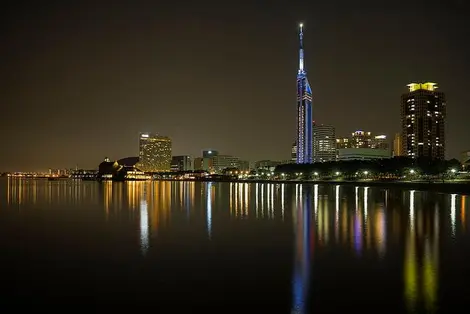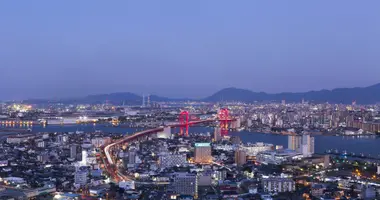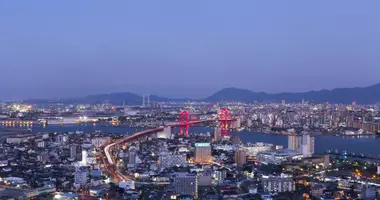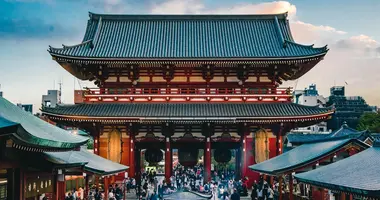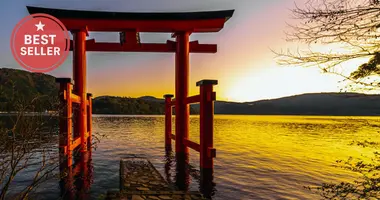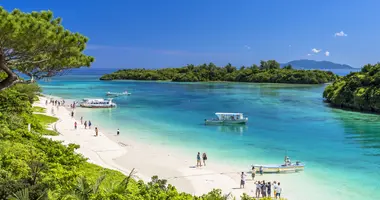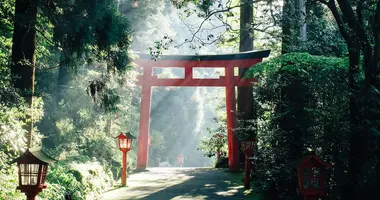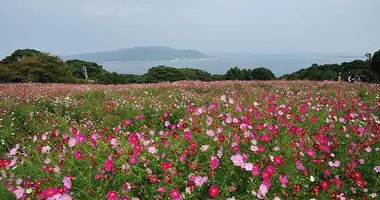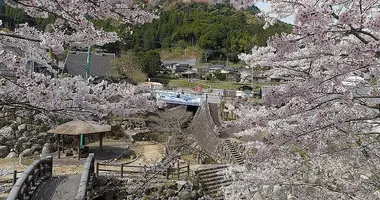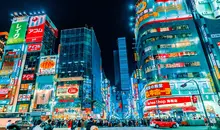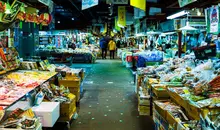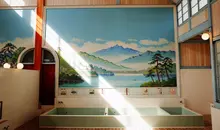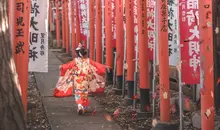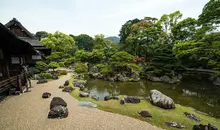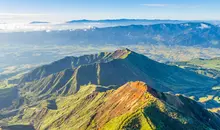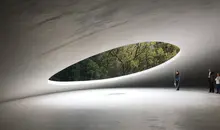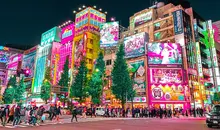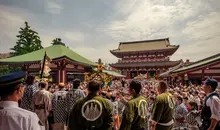Fukuoka Tower: everything you need to know about Fukuoka's iconic tower
- Published on : 04/02/2014
- by : C.W.
- Youtube
View from above
The 234-metre-high Fukuoka Tower is a landmark in Fukuoka's urban landscape. Inaugurated in 1989 in the Momochihama district, this triangular tower covered with 8,000 mirrors is now known as Japan's tallest waterfront tower. With its observation platforms offering 360-degree views of the city and Hakata Bay, its night-time illuminations changing with the seasons and its space dedicated to lovers, the Fukuoka Tower is a must-see for any visitor to the city. Let's find out what this iconic tower has to offer.
Introduction and history of the Fukuoka Tower
The Fukuoka Tower was built in 1989 to mark the 100th anniversary of the city of Fukuoka. Built at an impressive cost of 6 billion yen (approx. 37.1 million euros), it represented a major investment for this rapidly expanding city. After 14 months of construction, the tower has established itself as a modern symbol of Fukuoka, offering residents and visitors alike an unparalleled view of the city.
Located in Momochihama, in the Sawara district of western Fukuoka, the tower was built on land taken from Hakata Bay. This modern district, developed decades ago on land reclaimed from the sea, provides an ideal setting for this impressive structure, which dominates the urban landscape.
Film buffs and science-fiction fans may know the tower from its appearance in the 1994 film "Godzilla vs. SpaceGodzilla", where it is fictitiously destroyed during the final battle between the two monsters. This amusing anecdote contributed to the tower's notoriety beyond Japan's borders.
The tower's unique architecture and technical features
The Fukuoka Tower is distinguished by its triangular cross-section and facade covered with 8,000 half-mirrors, earning it the nickname "Mirror Veil". These mirrors allow it to sparkle day and night, reflecting blue skies, clouds and city lights, creating a visual spectacle that constantly changes according to the time of day and weather conditions.
From a technical point of view, the tower has been designed to withstand the extreme weather conditions that can affect the region. It can withstand winds of up to 63 metres per second (approx. 227 km/h) and earthquakes of magnitude 7. Its 25,000-tonne foundation guarantees its stability, while its weight above ground is just 3,500 tonnes. For reference, the strongest earthquake ever recorded in the region was of magnitude 6, and the strongest winds reached 49 m/s, leaving a comfortable safety margin.
A surprising feature of the tower is that its interior is almost entirely empty, with the exception of the top three floors, which house observatories and other facilities. Once a year, the more athletic can forego the 70-second elevator ride to attempt the 577-step fire escape up to the observation platforms.
Observation platforms and panoramic views
Fukuoka Tower has three observation decks at different heights, each offering a unique experience. The highest, SKY View 123, stands 123 metres above the ground and offers a 360-degree panoramic view. From this platform, visitors can admire the city of Fukuoka and the surrounding mountains on one side, and the immense Hakata Bay stretching as far as the eye can see on the other.
At a height of 120 metres, there's a café/lounge terrace where visitors can enjoy a meal while taking in the panorama. It's an ideal place to take a break and enjoy a moment of relaxation with a breathtaking view. For those who prefer to keep warm or suffer from vertigo, there is also a restaurant on the tower' s second floor.
The third platform, at 116 meters, is particularly popular with couples in love. Here you'll find"Lover's Sanctuary", a romantic space with a heart-shaped flower arch and fences where couples can hang love padlocks. Other attractions on this floor include the SKY Gacha, a machine featuring Fukuoka-themed figurines, and SKY Walk 123, a virtual reality experience simulating a trip outside the tower.
The view from these platforms is particularly spectacular at sunset and at night, when the city lights come on. In fact, the night view from the tower is one of Japan's 100 most beautiful nightscapes.
Practical information: access, prices and opening hours
Fukuoka Tower is easily accessible by public transport. It's about a 10-minute walk from Fujisaki or Nishijin subway stations (on the Kuko line). You can also take bus 306 from Hakata station or bus 302 from Tenjin subway station, and get off at the Fukuoka Tower stop.
Opening times vary slightly according to the season:
- April to September: 9:30am to 10:00pm
- October to March: 9:30 a.m. to 9:00 p.m
Please note that the last entrance is accepted 30 minutes before closing time. The tower is open all year round, with only two days closed in June for maintenance.
Entrance fees are as follows:
- Adults: 800 yen
- Schoolchildren (aged 4 to 15): 500 yen
- Children (under 4): 200 yen
Discounts are sometimes available for foreign tourists, saving around 20% on the entrance fee. A word of advice: it seems that access to the observation platforms is free on your birthday, so don't hesitate to ask if this applies to you!
For further information, contact the tower on +81 (0) 92-823-0234 or visit its official website: http: //www.fukuokatower.co.jp/english/index.php.
Night-time illuminations and special events
The Fukuoka Tower is transformed into a beacon of light at night, with 2,700 LED bulbs adorning its façade. These lights create magnificent light shows that vary according to the season and special events. The effect is made all the more impressive by the 8,000 mirrors that cover the tower, amplifying the brilliance of the illuminations.
In summer, the illuminations generally begin at around 8:00 p.m., offering a particularly enchanting spectacle. During the Christmas season, the tower offers special events and illuminations, transforming the monument into a veritable symbol of festivity. Other seasonal events, such as the cherry blossom season in spring or local festivals, are also celebrated with unique light displays.
Inside the tower, the 123-metre-high "SKY Illumination" zone offers a magical night-time experience, with hundreds of points of light on the ceiling and floor, creating a magical atmosphere. It's a particularly popular spot for couples, who come to admire the illuminated city in a romantic setting.
The tower also regularly hosts special events, such as temporary exhibitions, promotional campaigns with other city attractions (such as the Fukuoka City Museum) or animations around popular characters, like the special illumination of the anime character Sazae-san.
Fukuoka Tower in popular culture
The Fukuoka Tower occupies an important place in the Japanese and international collective imagination. Its most famous appearance is undoubtedly in the film "Godzilla vs. SpaceGodzilla" (1994), where it is dramatically destroyed during the final battle between the two monsters. This memorable scene helped put the tower on the map beyond the borders of Fukuoka and Japan.
The tower also has its own mascot, whom visitors can meet and have their photo taken with at certain times of the day. This mascot contributes to the liveliness of the site and strengthens the attachment of visitors, especially young ones, to this emblematic monument.
In the anime "Hakata Mentai!", which features Fukuoka's culinary specialties and landmarks, the tower appears as an important element of the cityscape. In particular, the main character, Pirikarako-chan, is depicted as a giant next to the tower, underlining the importance of this monument to the city's visual identity.
The tower is also featured in many tourist souvenirs, postcards and merchandising products sold in Fukuoka. It has become an essential symbol of the city, in the same way as the Tokyo Tower for Tokyo or the Skytree. Its distinctive silhouette is immediately recognizable and instantly evokes Fukuoka for those who know the city.
What to do nearby: attractions in the Momochihama district
The Momochihama district, where the Fukuoka Tower stands, offers many attractions and activities to complement your visit. This modern district, built on land reclaimed from the sea, combines green spaces, cultural facilities and sports.
Right next to the tower is the Fukuoka Municipal Museum, which regularly features interesting exhibitions (such as a recent one on Finnish design). Nearby, you can also visit the Municipal Library, whose modern architecture is well worth a visit even if you don't read Japanese.
Momochihama beach is a pleasant place for a stroll, particularly popular in the early evening and at weekends. This man-made beach offers a beautiful view of the bay and is a popular place for locals to relax. A small green path also runs right through the neighborhood, offering a pleasant shady route for strollers.
Sports fans can head to Hawk Town, home to the baseball stadium of the Fukuoka Hawks, one of Japan's leading teams. The atmosphere at games here is particularly lively, offering an immersion in Japanese popular culture.
The waterfront is also a pleasant place to stroll, with several restaurants and cafés where you can eat while enjoying the view. The area is also home to Marizon, a waterfront complex with stores and restaurants.
Although Momochihama is a fairly quiet, residential area, it offers an ideal setting for relaxing after visiting the tower. Its wide-open spaces, parks and beach make it a pleasant destination for a half-day visit to the western part of Fukuoka, away from the hustle and bustle of more central districts like Tenjin or Hakata.
Address, timetable & access
Address
Phone
+81 (0) 92-823-0234Timetable
9:30am - 10pm (April-Sep.),
9:30am - 9pm (Oct.-March)Price
Adults 800 yen
Schoolchildren 500 yen
Children (under 4) 200 yenAccess
10-minute walk from Fujisaki or Nishijin subways (Kuko line)Website
http://www.fukuokatower.co.jp/english/index.php
